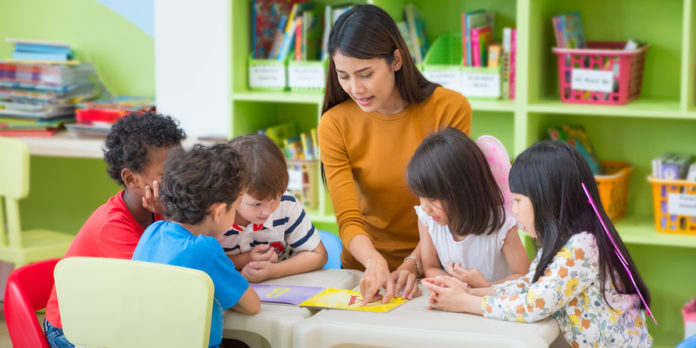
A new study from Flinders University shows four-year-old children who receive phonics and lessons about individual sounds in words can become better readers.
While 50 preschoolers studied in South Australia received 13.5 hours of lessons directly focused on phonics and sound awareness, 40 continued with their normal lesson plans.
On average, the children who received the focused lessons made bigger improvements in these areas than the ones who did not, according to lead author Dr Karyn Carson, a lecturer in special education from the College of Education, Psychology and Social Work at Flinders University.
“In tests, they performed 2.5 times better at converting letters into sounds and sounds into letters,” she says.
“This emphasised that this ability to move between letters and sounds is fundamental to reading development.”
Phonics and sound awareness were chosen as focus areas in this study, she says, because they “are the strongest predictors of how well children will learn to read when they enter school”.
“Preschool teachers interact with four-year-old children multiple times per week in the year leading up to school entry.
“Thus, they are ideally situated to plant the seeds of knowledge, identify children not keeping pace with their peers, support parents with take-home strategies, and provided important transition information to school teachers,” Dr Carson says.
This approach can help ensure that all children are on the trajectory toward reading success, instead of a trajectory of “wait-and-see.”
Of the 90 children in the study, 23 had spoken language difficulties; 13 took the focused classes, while 10 continued with the usual lesson plan.
While in this subgroup, the 13 children taking focused classes showed greater improvements than the 10 who didn’t, the result was less clear than in the case of typically developing children.
About 80% of the time in the focused lessons was devoted to sound awareness, the rest to phonics.
Phonics and sound awareness are different skills, but they are closely connected. While phonics is knowledge of the connection between sounds and written letters, sound awareness (known as phonemic awareness) includes recognising rhymes, identifying the first and last sound in a spoken word, and blending and separating the different sounds that make up words.
The lessons were delivered by pre-school teachers with coaching from trainee speech language pathologists.
Dr Carson says that empowering teachers to deliver such a program was invaluable to identify children who could be at risk of reading problems when they entered school.
She also cautions that the results of the study cannot be generalised to entirely different groups of children, such as those on the autism spectrum or with Down syndrome.
‘Effectiveness of Preschool-Wide Teacher-Implemented Phoneme Awareness and Letter-Sound Knowledge Instruction on Code-Based School-Entry Reading Readiness’ (2018), by Karyn Carson, Anne Bayetto and Anna Roberts (Flinders University), has been published in Communication Disorders Quarterly (Sage).
(Source: Flinders University, Communication Disorders Quarterly)









